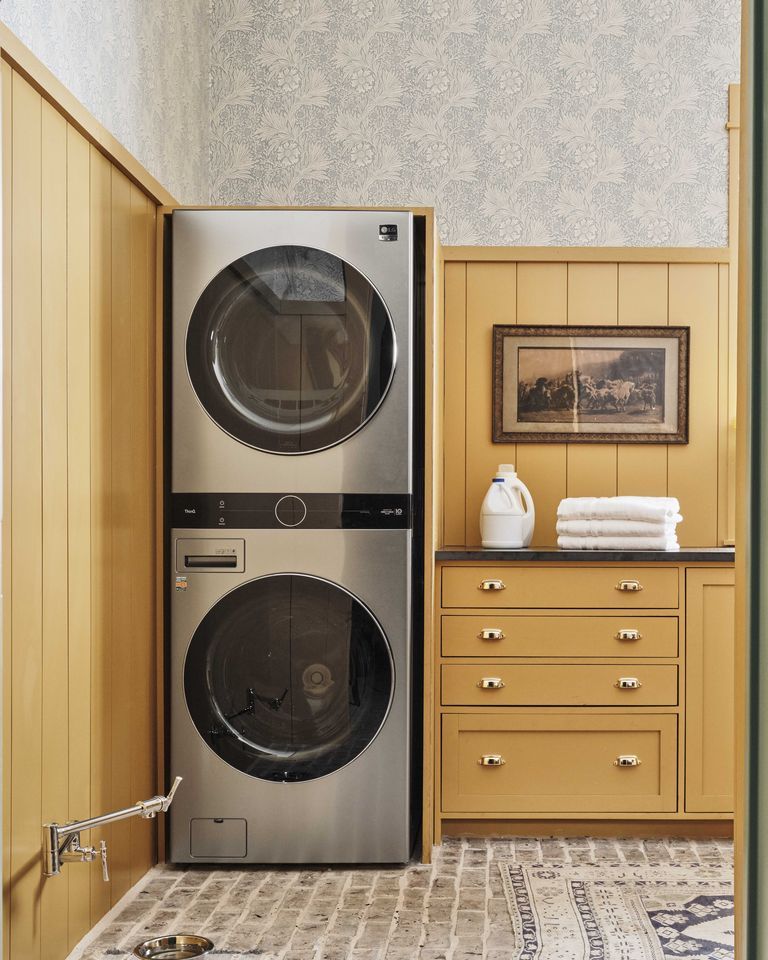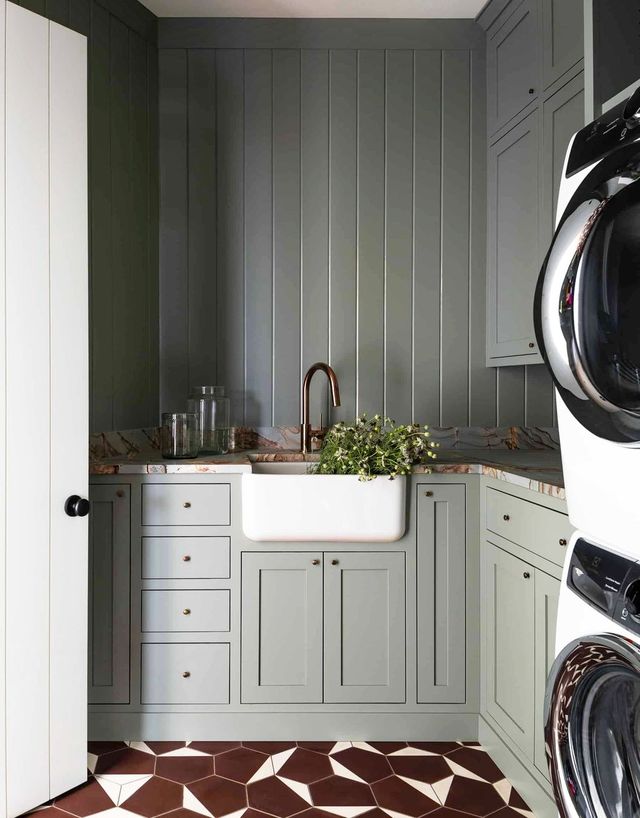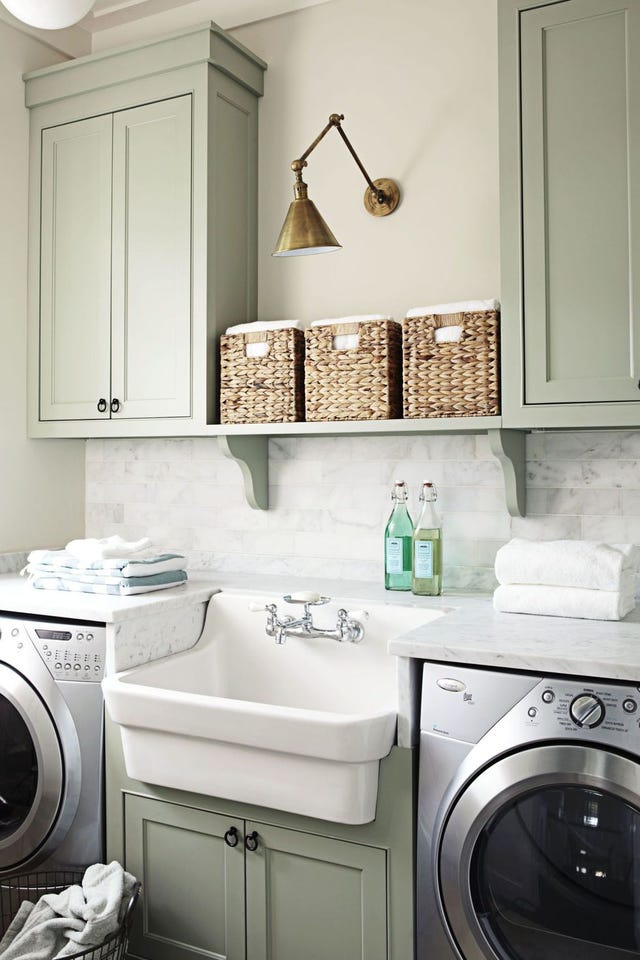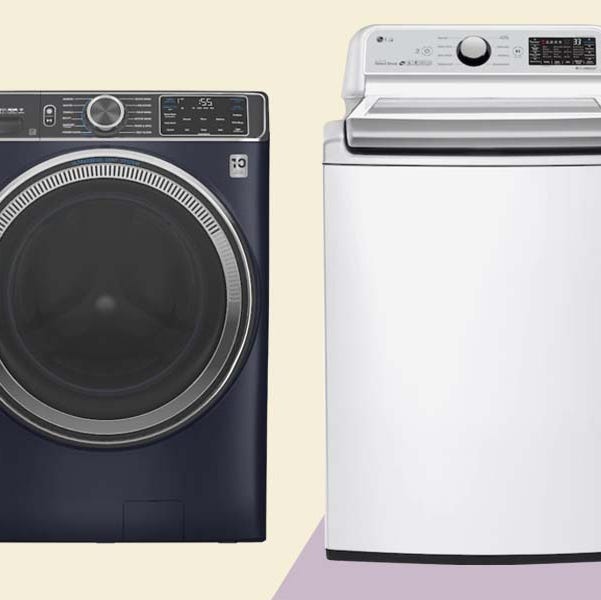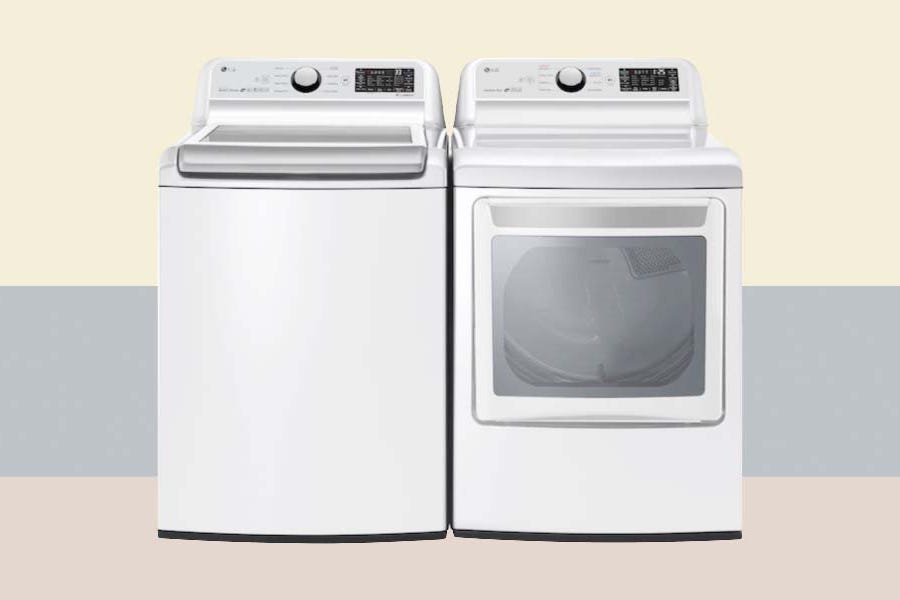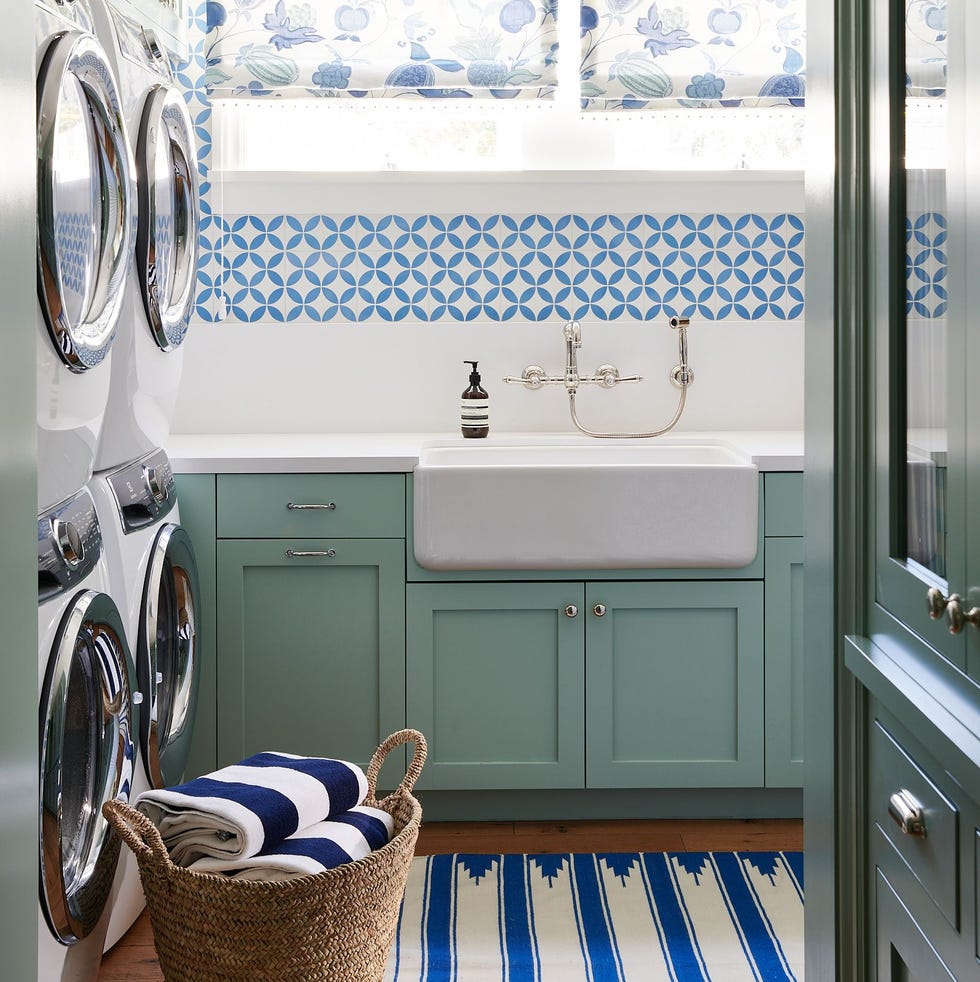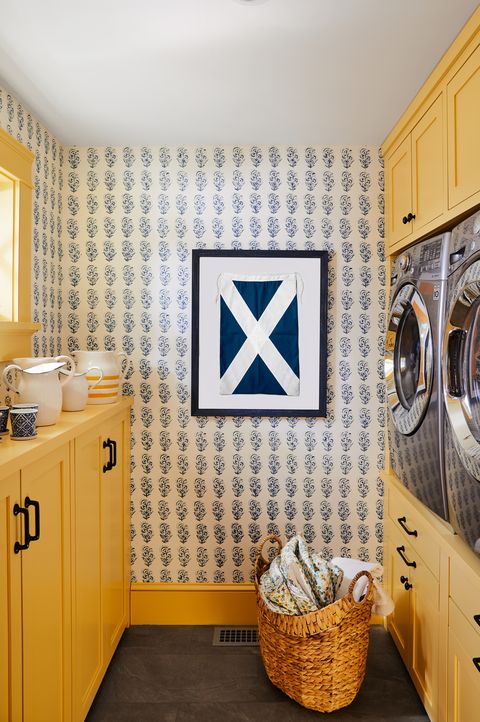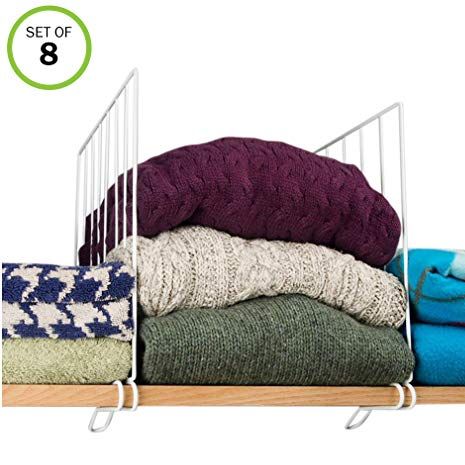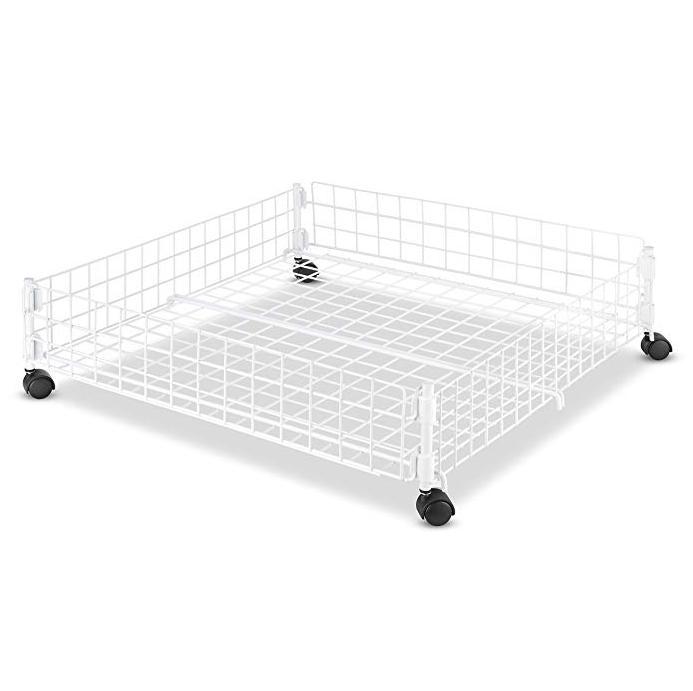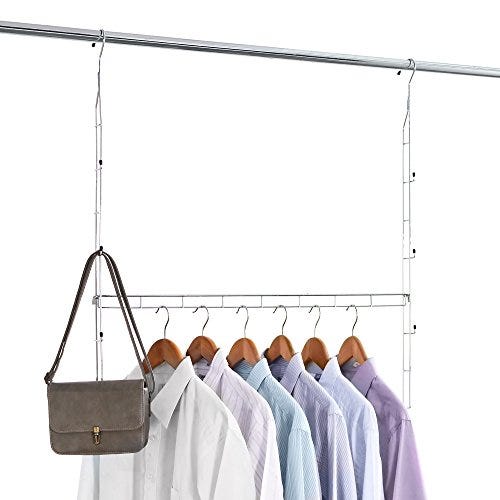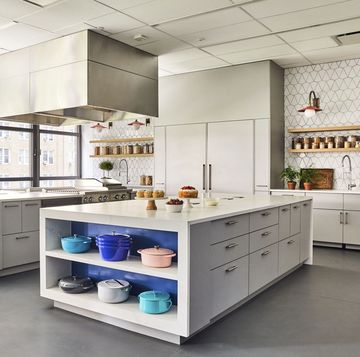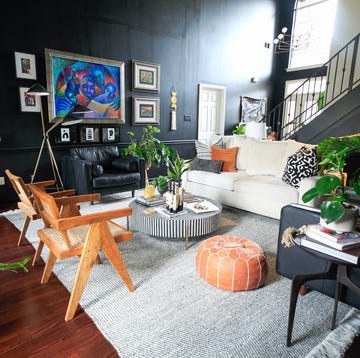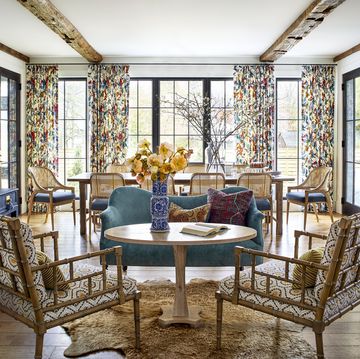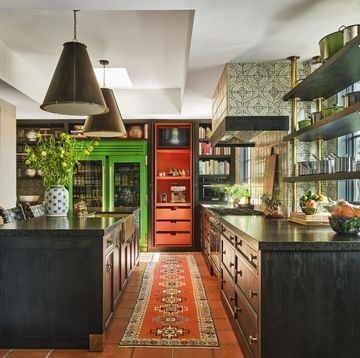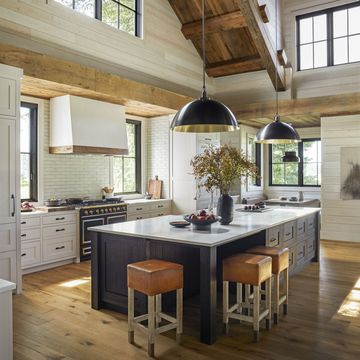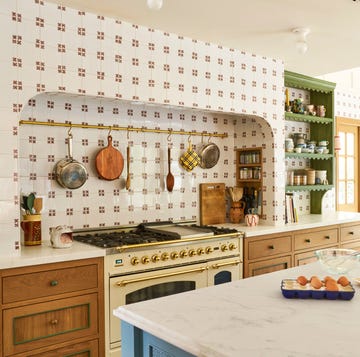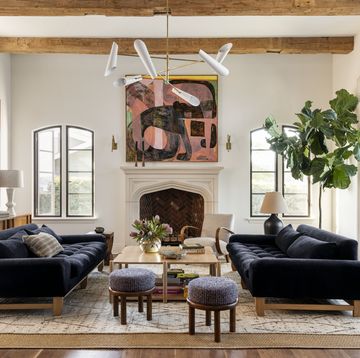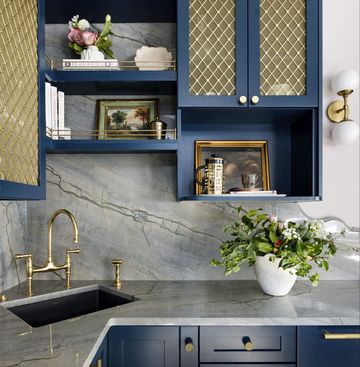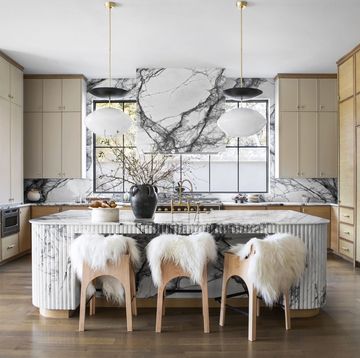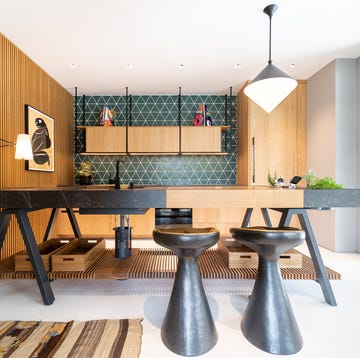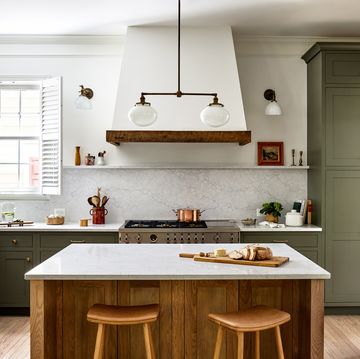If you were to ask anyone what house chores they least like doing, I'd bet that laundry would be among the most popular answers. Between washing, drying, and folding, it can feel like a daunting and seemingly endless task. But unless you're in the habit of tossing out your clothes whenever they get dirty, it's a chore that has to get done. Luckily, a well-functioning laundry room can make the work feel seamless. Whether you're building a laundry room from the ground up or renovating an existing space, there's a lot to consider between location, layout, appliances, materials, design, and organization (told you it was a lot!). With a process that can feel as daunting as the chore itself, we thought we'd make it easier for you. Ahead, hear from designers and experts about how to add a laundry room to your house—or renovate an existing one.
Picking the Right Location
Location is crucial. "The most important thing to consider is how you live!" says designer Maggie Dillon. Sure, throwing your washer and dryer in the basement might work from a functionality standpoint, but is it practical? "The laundry room is the most key player in day-to-day family life apart from the kitchen," adds designer Katherine Melvin. "If the laundry is easily accessed, it keeps things running smoother."
Melvin argues, "the laundry should be as centrally located as possible." Other designers suggest selecting a location closer to messes, like designer Katie Rosenfeld, who says, "it should go where the dirty things emanate!" If you ask designer Kelly Finley of Joy Street Design, she finds that her clients prefer their laundry within arms-reach of the bedrooms. "Then it's not a huge hassle to move your clothing from the laundry room and back," she says. "If we're lucky, we can put it in two places."
While it might sound luxurious to have two laundry set-ups, designers argue that it's actually a creative no-reno solution. "If your existing laundry room isn't in the perfect spot, add secondary machines in an area that's more convenient for you," suggests Dillon.
But if you're limited by an existing floor plan, a lack of space, or budget concerns, perhaps the best location is wherever you can squeeze it in. "If there's no dedicated laundry room, many people will have their washer and dryer in the kitchen, under the counter, or in a bathroom," says Laura Johnson, Research & Development Analyst for LG Electronics USA. "There's already existing plumbing set up in these areas, which allows homeowners to save more money." If none of these areas work, try incorporating your laundry into your design. "See if you can figure out a way to hide the machines. Can you build out a surrounding cabinet that looks like storage or a built-in credenza?" says Dillon. "I don't see a wrong answer!" In any case, whatever space you choose will need to meet certain technical requirements.
What Does a Laundry Room Need?
1.Water
You can't wash your clothes if you don't have power or water. It may seem obvious, but making sure your laundry room is set up with access to both is essential. While you'll want to call an electrician and a plumber before making any decisions, you can get an idea of possible locations by checking out your existing floorplan. Situating a laundry room near a room that already has plumbing, like a bathroom or kitchen, will make it easier (and more affordable!) for a plumber to hook up your appliances. (For those without a designated laundry room, save money by converting an unused pantry or closet in these areas.)
2. Power
Similarly, you'll need to make sure your outlets can handle the electrical needs of larger appliances. According to the National Electrical Code, a laundry room requires at least one 20-amp circuit for receptables serving only laundry equipment. This can service both a 120-volt washer and gas dryer. An electric dryer will require it's own 30-amp, 240-volt circuit with four conductors.
3. Ventilation
It's also important that the room has proper ventilation. Washers and dryers produce a lot of humidity, which can be a breeding ground for allergens, like mold and mildew. "Mildew builds up when moisture is allowed to stay around the room," says laundry expert and host of HGTV's Laundry Expert, Patric Richardson. Not only will you need a dryer vent with direct access to the outdoors, but you'll also want a window or exhaust fan to help reduce humidity in the air. If you don't have a window, try adding a fan or dehumidifier to rid the space of excess moisture.
Picking the Right Layout
Laundry room layouts are similar to kitchen layouts in that the right one can make a space run more efficiently. Your layout will largely depend on the size of the space you're working with. If you're adding a dedicated laundry room, Melvin suggests a size of 8' x 14'. "I've found these dimensions to be ideal," she says. Of course, not everyone has the luxury of creating a room according to the perfect specifications, so you'll want to pick a layout that makes sense for the space you do have (more on that below!).
Aside from space, you'll also want to take your lifestyle into account. Some homeowners might want room to fold clothes, so they'll opt for a layout that prioritizes counter space. If storage is what you're after, pick a layout that has plenty of vertical space for shelving and cabinetry. As celebrity designer Brigette Romanek tells us, "a good room layout will make all the difference.
Here are a few common layouts designers recommend:
L-Shaped Layout
As the name suggests, an L-shaped layout simply means that countertops and appliances are clustered against two adjacent walls that form a right angle. Typically, one side is longer than the other. This layout works especially well in narrow spaces.
U-Shaped Layout
The U-shaped layout is best-suited for bigger laundry rooms. This type of layout builds on the L-shape with runs of cabinetry on three of the four walls. In large enough spaces, designers might add an island to the center of the room or, as Stephanie Sabbe did in House Beautiful's 2021 Whole Home, pet owners can add a washing station to clean off muddy paws.
Galley Layout
The galley layout might be the most basic layout option, but that doesn't mean it's not a designer favorite. "I love galley layout!" says Finley. Perfect for tighter rooms, this layout features one wall of countertops and appliances, or, if space allows, back-to-back runs of cabinetry on opposite walls.
Picking the Right Appliances
Your laundry room is only as good as the appliances you put in it. Buying new appliances can be costly, but investing in good machines can save you money on repairs down the line. Pay attention to customer reviews and ratings to get a sense of each unit's longevity and function, explains Johnson. From there, you can narrow your search by exploring the capabilities of each unit: Does it have all the wash cycles you need? Is it energy-efficient?
Of course, you'll also want to consider the size of your home and the type of appliance that best fits your priorities. If you're working within a small footprint, try stacking your appliances to save on horizontal space. In this configuration, you'll only need between 30" and 33" of floor space and 70" to 78" of vertical clearance. Johnson suggests the LG WashTower, a vertical single-unit washer and dryer, for narrower spaces. You can also purchase a combination washer and dryer if you're really tight on space, though most experts warn against this type of unit since they're typically less effective.
But if space isn't a concern, most designers would recommend situating your washer and dryer side-by-side. "If you have the room, it's always an easy answer," says Dillon. If you go with this layout, the question becomes: front-load or top-load? Here's what designers have to say.
Front-Load or Top-Load?
If you've been clinging to the same washer or dryer for longer than you'd like to admit, you probably have a top-loading unit, since that was the only type available to consumers before the 1950s when the front-loading unit was first invented. Today, both are popular options. So, which one should you pick?
Like most things in the laundry room, the decision is highly personal. "In a perfect world, a top-load machine is my preference," says Dillon. "I am partial to the front loader personally because I love when we can extend the cabinetry and countertop over the washer and dryer," agrees Melvin. "I love a front-load, but the return of the top-load is happening," explains Rosenfeld.
The biggest difference between the two is, well, how you load them. A top-loading machine opens from the top (surprise, surprise), which makes it easy to throw in clothes if you're standing. A front-loading machine opens from the front of the unit, which means you'll need to bend down to put in and take out clothes, which may be an important consideration if you're older or planning on aging in place. Front-loading machines also require more clearance in front than a top-loading unit since the doors swing open, so unless the space is wide enough, you'll want to steer clear. "You wouldn't want your washing machine door bumping into the dryer door when both open," says Dillon.
If you're prone to allergies, top-loading is probably the best choice. "Front-loading machines typically tend to mildew faster!" explains Dillon. "Mold and mildew often occur because front-load washer doors are often left closed after washing, trapping water inside," explains Johnson.
Shop our picks of washers and dryers below:
What other appliances do you need?
Aside from the obvious need for a washer and dryer, designers recommend considering all your needs before settling on the bigger appliances to avoid a too-cramped space later on in the process. "We really go through the gamut of all the possible things you can put in there. Then, we figure out what's really gonna fit based on their space," explains Finley. Think about your drying needs (do you need a hanging rack or a steamer?) as well as how you might use the space outside of laundry day. "We like to include a large basin sink for washing and watering the plants for our clients," reveals Melvin.
Setting Up Your Space
Now that you've ironed out the basics (pun intended), it's time for the fun stuff: designing your space. "The laundry room poses an interesting set of design questions because it uniquely calls for a 50/50 split between function and looks," explains Melvin. From the best materials to use to genius storage solutions, here's how to get the best of both.
Materials
The best materials to use in the laundry room are the most durable materials. Water and humidity are practically a recipe for wear and tear, so you'll want to steer clear of hardwood flooring, which absorbs water rather than keeping it at the surface. "Never use anything precious," says Rosenfeld.
1.Floors
"Floors should be a durable material like porcelain or ceramic tile." Melvin offers a similar suggestion: "We often recommend a tile floor for its durability. Some of our favorites include penny rounds, peacock pavers, or ceramic squares in a bistro-style layout." Concrete, vinyl, or laminate flooring are also durable options.
2. Counters
When it comes to the countertops, you can use many of the same materials you might use in the kitchen. Quartz is a popular pick (and a favorite of Melvin's!) since it's long-lasting and can handle plenty of accidental detergent spills. This option tends to be pricier, but for countertops that will last decades, it can be a worthwhile investment. Natural stones, like marble, soapstone, or granite, are more precious, but since the counters are less prone to damage than the floors, consider them a safe choice. "I often choose a black matte granite. It looks like soapstone, but it's hearty!" says Melvin. Other popular options include butcher block, tile, and laminate.
3. Walls
"For the walls, we often recommend wallpaper or a fun paint color," says Melvin. If you decide to go the wallpaper route, Dillon warns that you'll want to be sure that the room is properly vented to avoid peeling. Finley suggests viny or waterproof wallpaper for added durability.
Designing Your Space
"Nobody wants to do laundry, so my thought process is 'let's make it fun and pretty and bright,'" says Finley. "Put in the thought to make it a happy space for you. If this means a fun wallcovering or colorful knobs, there's your answer," echoes Dillon. "With tile, paint, lights, countertop materials, etc., you really can make it your own special room. Make it one that you want to go into," advises Romanek. "I've seen and designed some serene laundry rooms, and some fun laundry rooms with bright colors."
The bottom line? Give your laundry room the same attention you would give any other room. If a relaxing space is what you're after, opt for soothing colors like white, blue, or green. But if bold colors and funky wallpaper are the drive you need, go for it! As Romanek says, "every room is up for great design, even the laundry room!"
Organization
The beauty of redoing your laundry is that you can incorporate your storage and organization needs into the design. If you know that you need a place to store extra linens or cleaning products, consider incorporating a shelving until into your layout or adding open shelving for labeled baskets. Need a spot to keep ironing boards and drying racks out of the way? Mount them to the wall or use over-the-door hooks to save on floor space. In smaller layouts, designers unanimously agree that vertical space is your most valuable asset, so never overlook the importance of a good hook, shelf, or upper cabinet (you could even use an existing rod in a closet set-up to hang clothes, or even baskets for additional storage!).
The key to nailing laundry room organization is finding systems you can upkeep à la Home Edit. Set yourself up for success by giving everything a designated home. Label bins and drawers and categorize items by function to make clean up a breeze. To make loads less time-consuming, keep the things you'll need most often (like detergents or dryer sheets) within arm's reach. With a little care and attention, your laundry room—and perhaps the chore itself—may just finally become beloved.
Read more: 25 Laundry Room Organizers That Will Transform Your Space
Want to know absolutely everything before starting your reno project? We get it. Let’s obsess over the details together.
Nathalie is the former Senior Editor of Content Strategy at House Beautiful where she covered everything from home decor to the latest news. She is a social media pro and is obsessed with all things travel.

